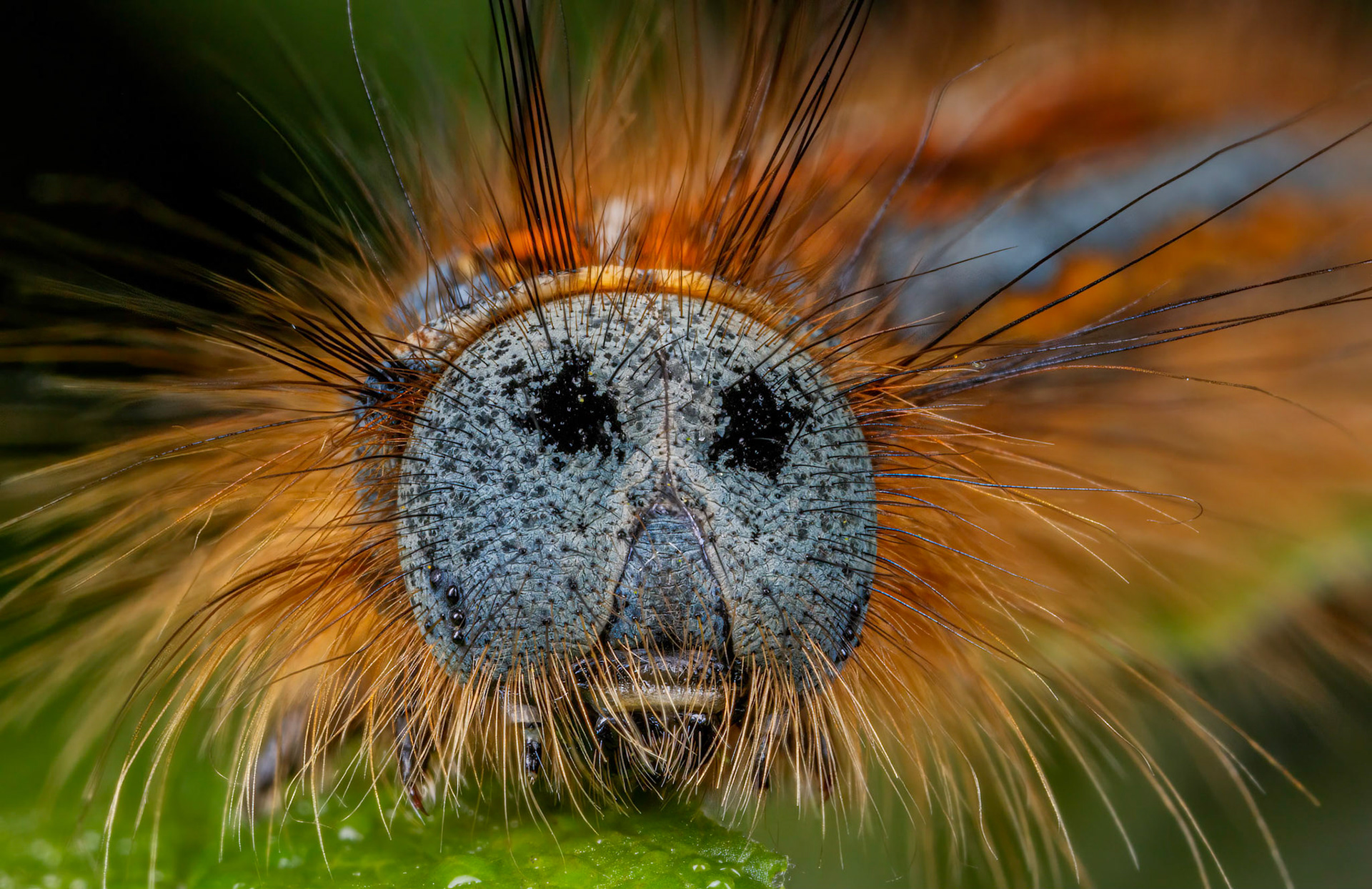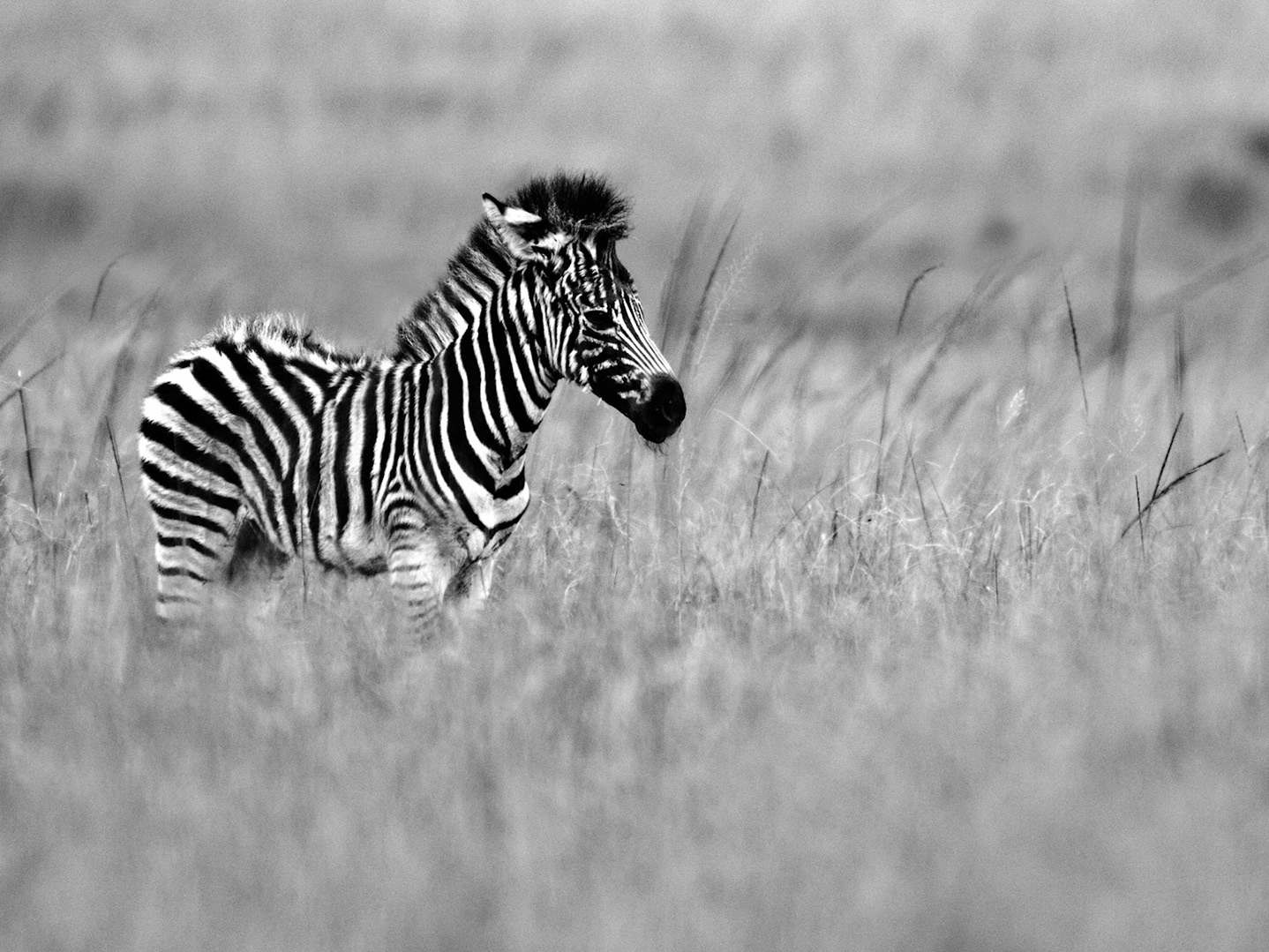After you're done looking here why not head over to my website dedicated displaying my Up-Close, Macro, and Extreme Marco photo's.
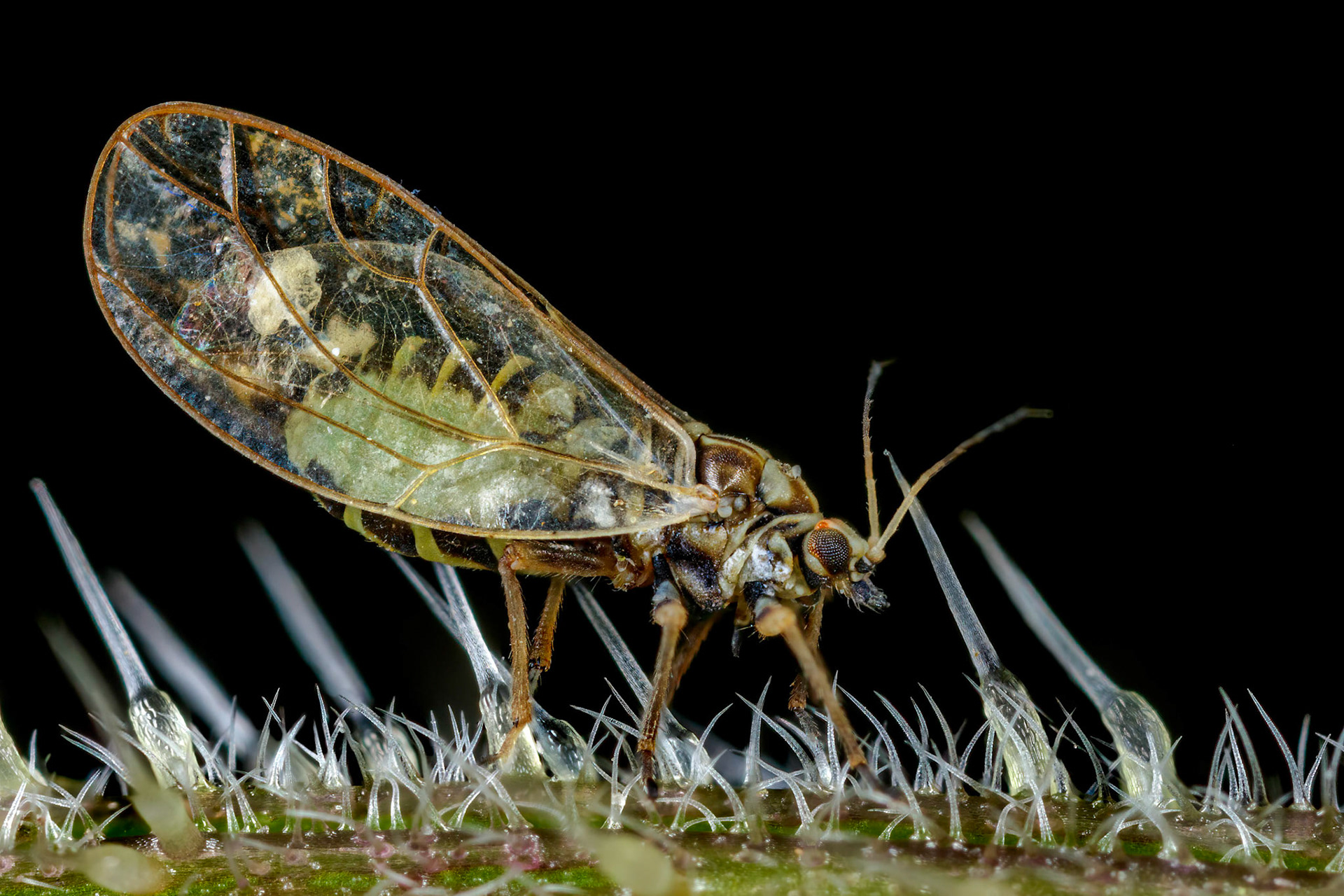
Photo Stack: 9Phylum: ArthropodaClass: InsectaOrder: HemipteraSuborder: SternorrhynchaSuperfamily: PsylloideaFamily: TriozidaeGenus: TriozaSpecies: Trioza urticaeA reasonably distinctively species in a large and difficult genus. Although the colour is variable, they typically show reddish-brown to black markings on a cream/white background. Young adults can be largely green. The forewing membrane is yellowish and somewhat opaque, and the wing tip relatively rounded (for Trioza) with a long outer vein. Antennae have segments I-III yellow, the remainder being dark. Genal cones are dark, slender and divergent, and the female terminalia are quite long for the genus.The species is virtually ubiquitous on nettles across the UK, on which the strikingly-marked (unless freshly moulted) nymphs cause small, bladder-like galls. The adults overwinter, and there can be as many as four generations in the UK per year, such that nymphs can also be found virtually all year, at least in the south. Overwintering adults can be found on a variety of plants (including conifers), as well as on the few available nettles.Adult: all yearLength 3-3.5 mmPhoto Stack: 9 Psyllids or 'jumping plant lice' are small phytophagous, phloem feeding insects that are typically monophagous (feed on a single plant) or oligophagous (feed on a few related plants).

A Common Froghopper amongst the young curled bracken fronds. Froghoppers are one of my favorite insects to photograph as they seem to have different personalities. This Froghopper wasn't one of the shy ones leaping away or hiding in the depths of the ferns allowing me to photograph it in it's natural habitat.

Spittlebug or Froghopper nymph in a Woodland in Mutter's Moor, Devon, UK on bramble surrounded by its bubbles or spittle. In the spring I had been noticing this white foam on various plants when I would walk around looking for insects in the woodland. After I saw my first Spittlebug crawl out the foam I set out to photograph them emerging from the bubbles and after finding some bramble covered in various spots of foam I waited patiently for them to emerge. The final image is a compilation of focus stacked pictures.
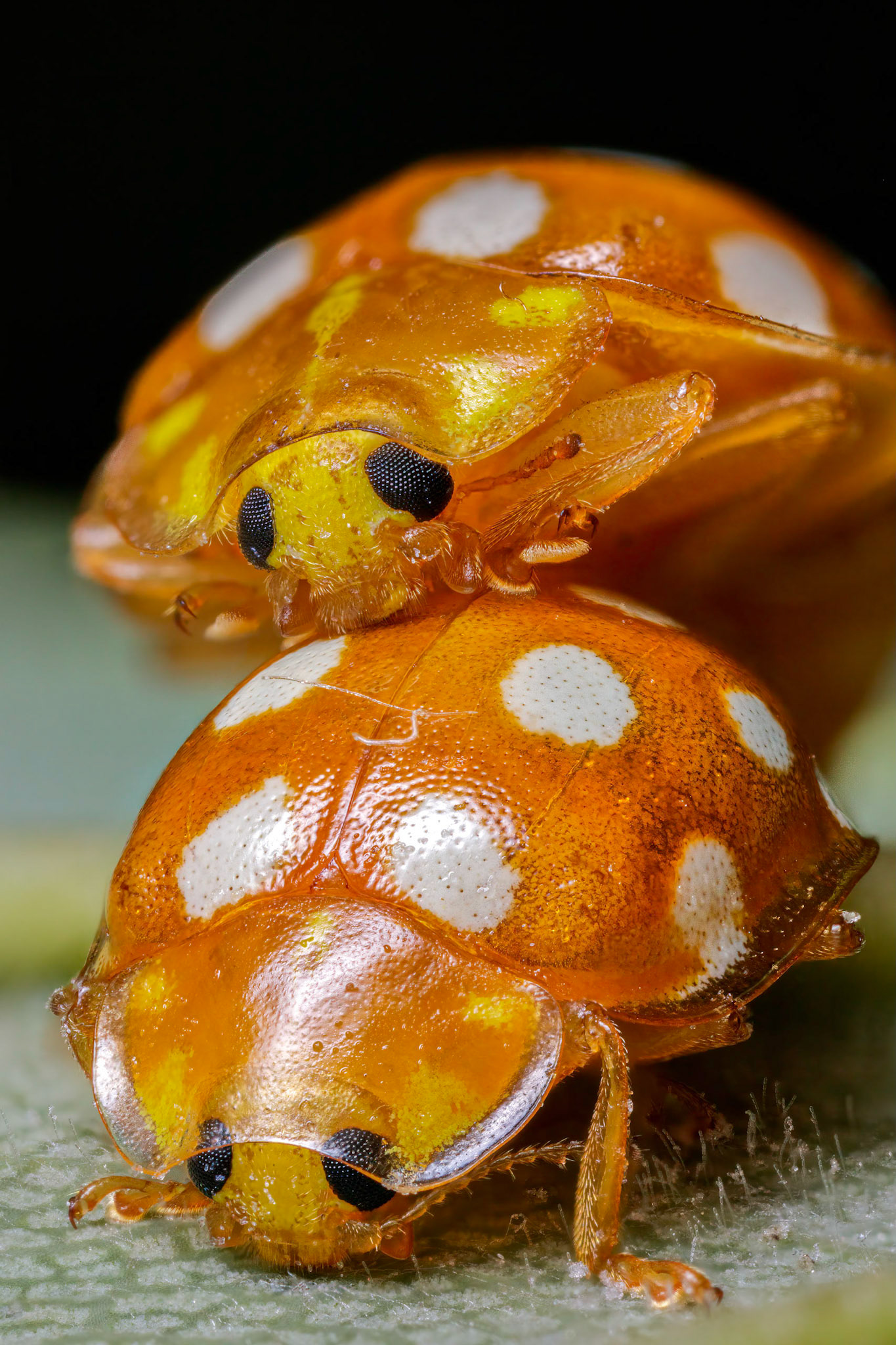
Two Orange Ladybirds mating on a leaf in a Woodland in Mutter's Moor, Devon, UK. Being orange these two were easy to spot on a walk through the woodland photographing insects. Being busy they didn't mind me capturing a few different angles of the pair. This angle was my favourite as it showcased the detail of Ladybirds and the intimacy they were sharing. The final image is a compilation of focus stacked pictures.

A male Common Earwig (Forficula auricularia) in Stover Country Park, Devon, UK. At first I thought I was lucky to find an Earwig that would stand still enough to photograph but after closer inspections I noticed that it wasn't alive due to a fungus that you can just see holding it to the leaf.

Two Hazel Sawfly Larvae (Nematus septentrionalis) in Stover Country Park, Devon, UK. These larvae can be quite numerous at certain times of the year but rarely do you find them lined up and posing for you so nicely. The final image is a compilation of focus-stacked pictures.
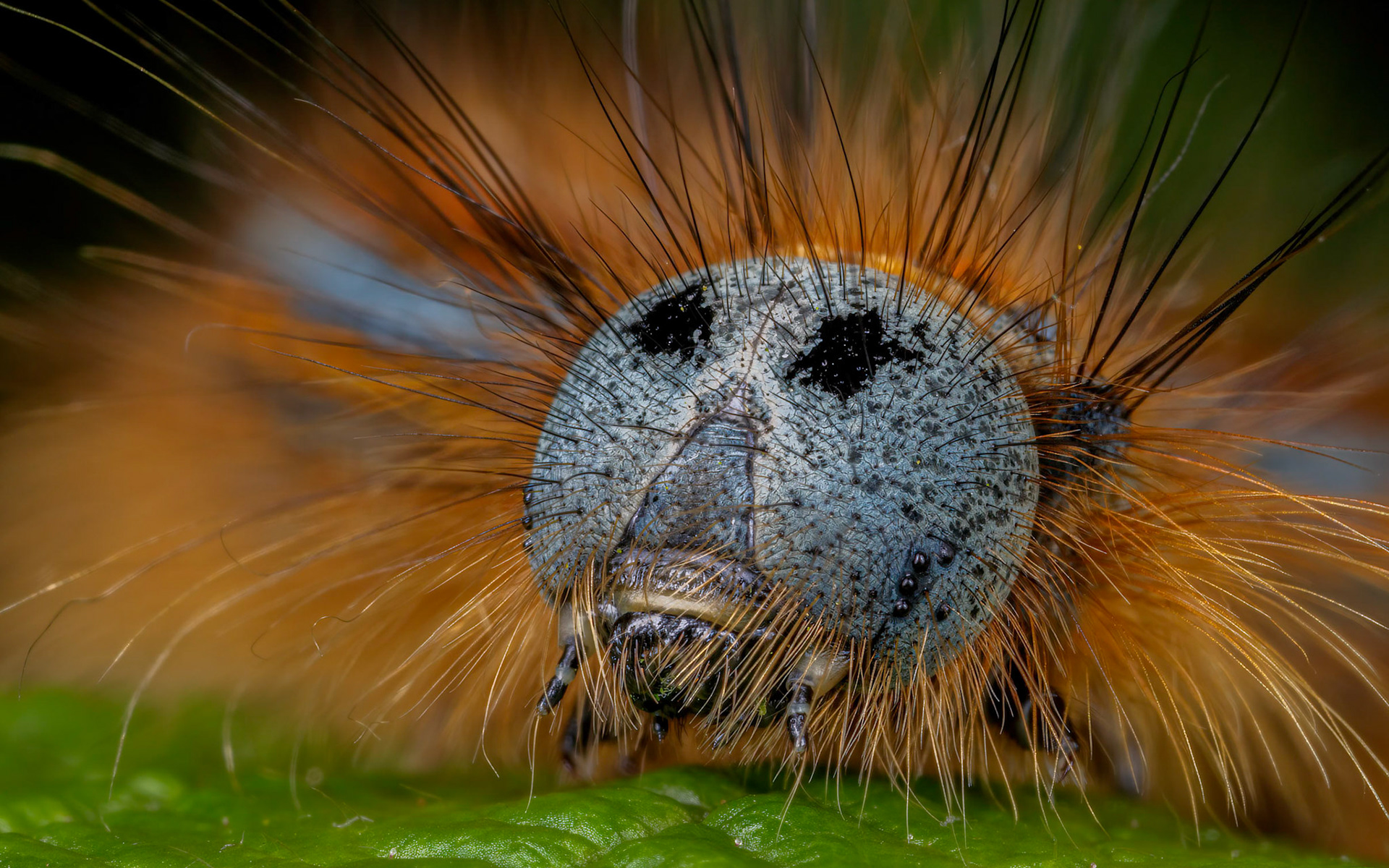
A Lackey Moth Caterpillar crawling around in Deodar Glen within the Killerton National Trust Estate in Devon, UK.

A Dock Bug siting on a leaf soaking up the sun in Mutter's Moor near Sidmouth, Devon, UK. The final image is a compilation of focus-stacked pictures.Shot with the Canon R5 and the Canon EF 180mm Macro and a 2x teleconverter.

Close-up of a Common blue damselfly (Enallagma cyathigerum) in Stover Country Park, Devon, UK.

Pair of Weevils (more specifically Nedyus quadrimaculatus) nestled on nettles in Dunsford Woodland, Devon, UK. Commonly found on nettles, this weevil species has been a subject of more than one of my insect walks. It's possible they stayed in this position after mating, but it appears they were huddling for warmth over the night.

An Emerald Damselfly (Lestes sponsa) still covered in the morning dew that was too cold to move in the cool morning air near a pond in Aylesbeare Common, Devon, UK. The final image is a compilation of focus-stacked pictures.

Two Hazel Sawfly Larva eating on a leaf in Mutter's Moor near Sidmouth, Devon, UK. Knowing Sawfly Larva can be plentiful in the early autumn month, I set out looking for them on this day. On my walk through the woodland, I hadn't seen many insects that would allow me to photograph them. Then I came across a group of this larva, and I was happy I found what I was looking for and even more pleased to see these two almost mirroring each other.

Photo Stack: 9
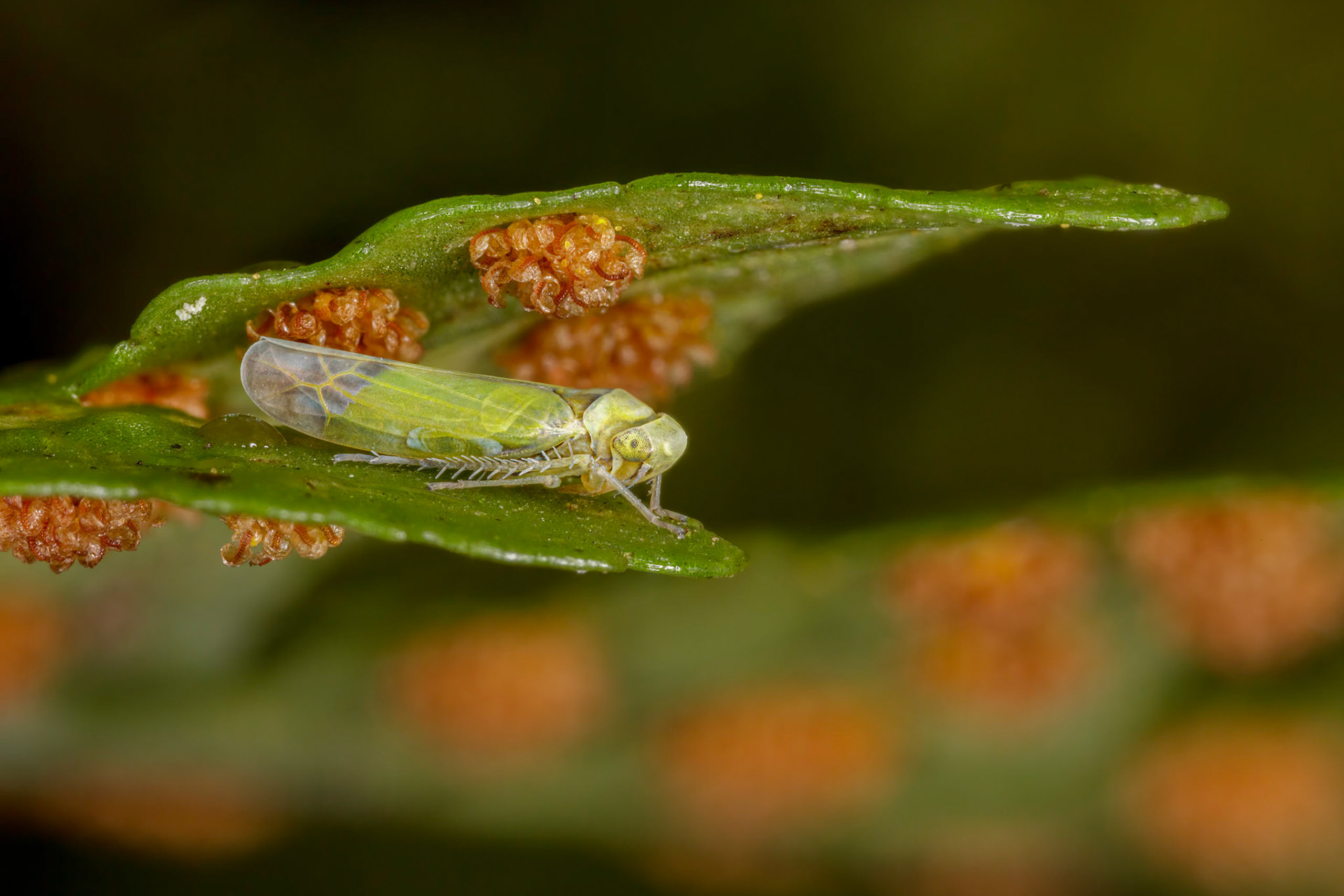
Photo Stack: 29

https://www.ukbutterflies.co.uk/family.php?name=Hesperiidae

Photo Stack: 12Crop: 3x2Kingdom: AnimaliaPhylum: ArthropodaSubphylum: ChelicerataClass: ArachnidaSubclass: AcariSuperorder: AcariformesOrder: OribatidaCould be a Eupelops torulosus from PDFMoss mites (Acari: Oribatida) are microscopic (0.1–1 mm) soil-dwelling arachnids thatfunction as soil decomposers.https://www.researchgate.net/figure/Photos-of-oribatid-mites-taken-with-microscope-by-R-Elo-Species-from-left-to-right_fig1_333812071https://en.wikipedia.org/wiki/OribatidaMites AnnelesAII350Elo.pdf

Photo Stack: 30Class: InsectaOrder: ColeopteraInfraorder: CucujiformiaClade: PhytophagaSuperfamily: CurculionoideaFamily: CurculionidaeSubfamily: CurculioninaeGenus: CurculioSpecies: Curculio glandiumCurculio glandium is a species of European carpophagus weevil in the genus Curculio, the acorn and nut weevils. It eats by a rostrum, an elongated snout, that is used for piercing.https://en.wikipedia.org/wiki/Curculio_glandium
